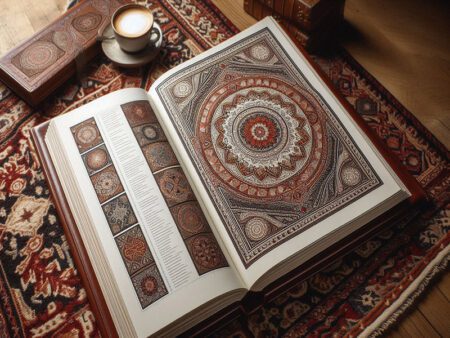
VERNA CARPET – Redesign by Parsineweb


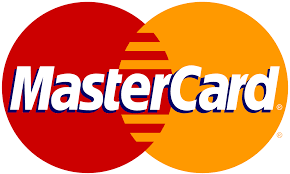

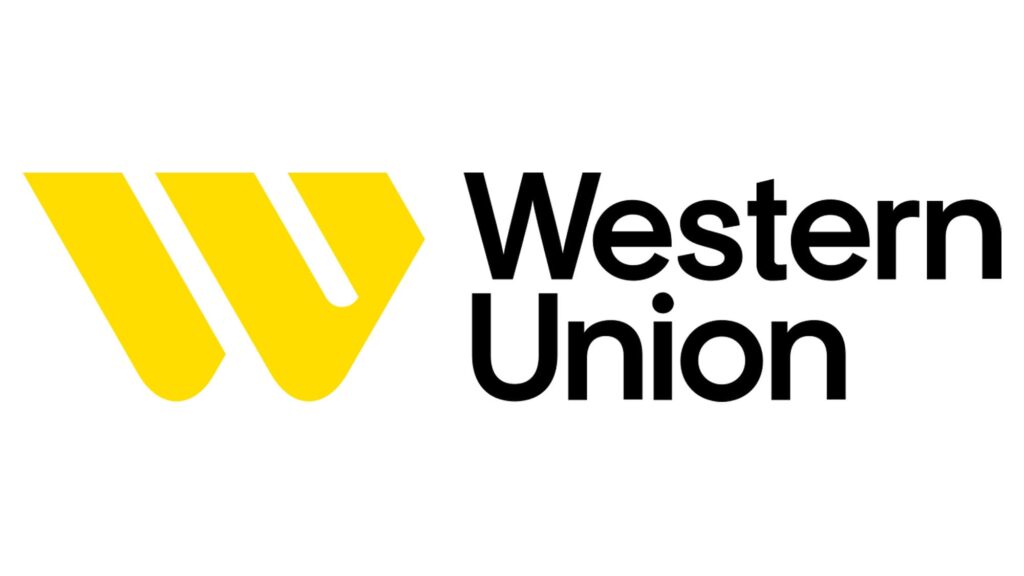
Showing all 11 results
Among Isfahan rugs, the Seirafian carpet is one of the most well-known. Do you know the Seirafian family? Have you ever seen Seirafian’s signature on a rug? How did this family start to build a personal brand of Seirafian rug? What do you think is the reason for a brand to last a century?
If you are one of those who are interested in Iranian rugs, you have probably heard the name of the Seirafian rug. It might be interesting for you to get to know the members of this big family. You may even want to buy a Seirafian rug. So stay with us until the end of the article!
Isfahan rugs have always been among the original and magnificent rugs throughout history. But Seirafian Isfahan rugs are rugs that every collector would like to have among these rugs. In the following, we will introduce you to this famous family and some of their masterpieces. So stay with us until the end.
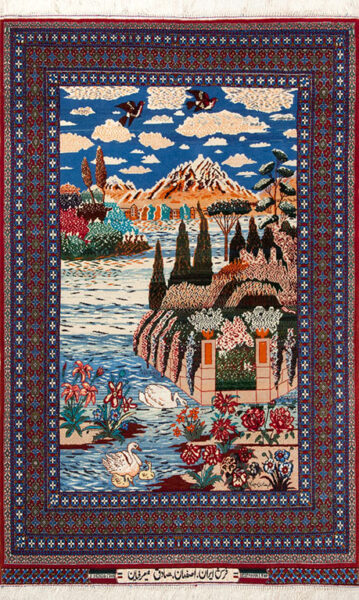
Landscape design by the late “Sadegh Seirafian”
Haj Agha Reza Seirafian, the great master of Iranian rugs, lived in Isfahan between 1881 and 1975. His father Agha Mohammad-Ali Esfahani was a well-known businessman. The mother’s family was also famous in Isfahan, and they were engaged in banking and exchange at the beginning.
The late Haj Reza was not interested in his father’s job and chose the job of his mother’s family. It is interesting to know that the surname Seirafian is derived from the word “Seiraf” which means money changer(sarraf).
He worked as a money changer for several years. On the other hand, his great interest in rug weaving and collecting Persian hand-woven rugs led him to this Iranian art. Unfortunately, the rugs he collected were not of very good quality.
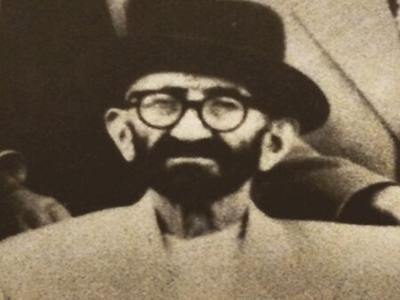
The late Haj Agha Reza Seirafian
For this reason, in 1940, he decided to produce and market rugs together with his son Mohammad Seirafian. At this stage, he gathered famous dyers, rug weavers, and designers together to produce rugs of good quality.
Haj Reza Seirafian used the best and most delicate fibers of fluff(kurk) and silk to create his works. He also used the best dyeing masters to apply beautiful and natural colors to them. To create unique works and authentic Iranian patterns, he used master designers and women weavers. It didn’t take long for Seirafian carpets to become popular among people and businessmen became interested in working with him.
In a creative act, he decided to expand his brand, so he weaved a signature with the last name Seirafian and the flag of Iran under his rugs. Currently, many Isfahan Seirafian rugs are kept in museums, palaces, and private collections.
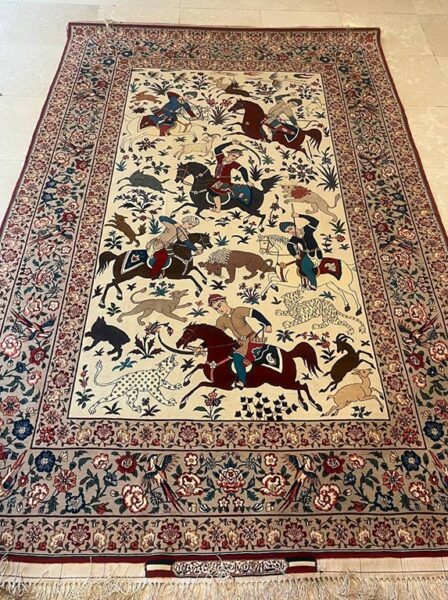
Shikargah design rug by Master ‘Hussain Seirafian”
This talent and pure quality of rug weaving was passed down from generation to generation in the Seirafian family. The children of Haj Reza, who saw the success and prosperity of their father, cooperated with him. The late Haj Reza had seven sons and they all continued the path of rug weaving. Older sons played a key role in the development of Seirafian’s workshop.
Among the sons, the second son named Muhammad, and the third son named Sadeq are more popular. The late Muhammad Seirafian expanded the carpet-weaving art of Isfahan with his continuous activity and determination. His blessed life was between 1921 and 2021 and he served Iran’s rug weaving in this one century.
Mohammad Seirafian created beautiful artistic rugs, and one of his masterpieces is the famous “Bani-Adam” rug, which he donated to the United Nations. Other masterpieces of this late master are Golu-Bulbul and the hunting scene. Also, the late Mohammad Seirafian was known for his philanthropy and founded Seirafian University in Isfahan.
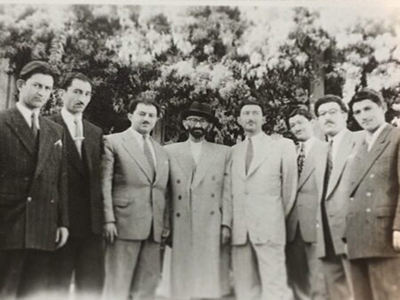
Haj Agha Reza Seirafian with his seven sons
The third son, Haj Sadegh, was also serious in this work and started producing exquisite Isfahan rugs alongside his father. He, who lived between 1922 and 2005, left lasting carpets to this industry. Among these rugs, we can mention Behesht rug (Eleven Scenery), Simorgh, and Golestan.
Master Ahmad Seirafian, the fourth son of Haj Reza Seirafian, lived between 1925 and 2011. He also had a powerful hand in producing exquisite and luxurious rugs and continued his father’s profession with the great masters of design. Ahmed Archang, Abbas Karbasion, and Haj Mosavver-Ol-Mulki were famous master designers with whom the Seirafian family worked. There were seven sons of Haj Reza in order of age:
Among the third generation of the Seirafian family, some continued the path of their fathers and created exquisite carpets. The sons of the late Mohammad Seirafian named Mehdi, Mojtaba, and Baqer are prominent masters of the Seirafian rug.
The third son of the late Sadegh Seirafian, Karim, is currently engaged in the production of exquisite rugs. Karim Seirifian’s slogan is “the best for the best”. The fourth generation of the Seirafian family is currently protecting this credit like a pearl.
This family has about 24 grandchildren, most of whom are engaged in rug production. Seirafian Isfahan rugs have the best quality among Iranian carpets. These rugs are known not only in Iran but all over the world and have special fans.
It can be said that Seirafian Persian rugs are the most expensive and luxurious rugs in the world! In the photo below, you can see the details of the members of the Seirafian family.
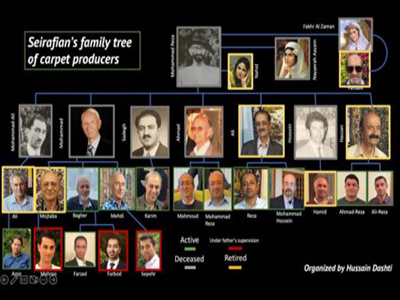
Seirafian family tree
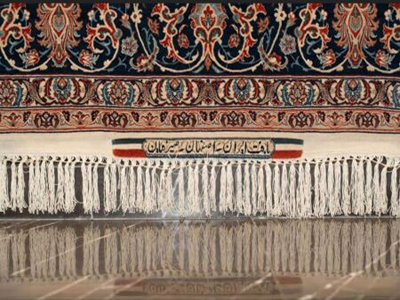
Authentic signature of Seirafian rug
This carpet is one of the most exquisite rugs in the world, which was donated to the United Nations in 2015 by Professor Mohammad Seirafian for “Dialogue of Civilizations”. The design of the “Bani Adam” rug is inspired by Iranian architecture.
The dimensions of the rug are 191 x 207 inches and it took more than 10 years to weave it. The density of the rug is high and about 200 knots are woven per square centimeter.
Another characteristic of this legendary rug is the beautiful poetry of Bani-Adam “Saadi“, an ancient poet of Iran. The Secretary General of the United Nations, “Ban Ki-moon“, mentioned this rug during his speech in Tehran in 2012 and said: “There is a huge rug at the entrance of the United Nations. I think it is the biggest rug that the United Nations has-which adorns the wall of the organization. It is a gift from the people of Iran. Next to those wonderful words of Saadi, the great Iranian poet.”
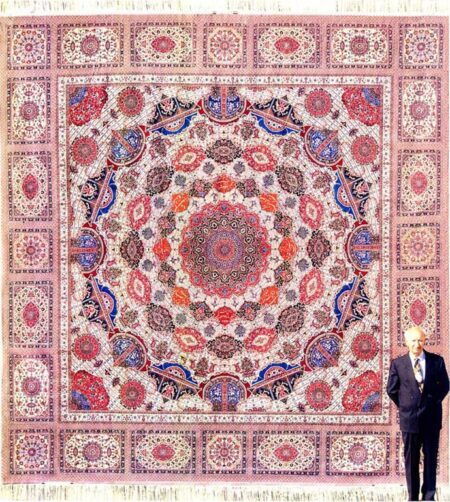
The late Master Mohammad Seirafian next to the famous Bani-Adam carpet donated to the United Nations
Another exquisite rug by Master Mohammad Seirafian and the design of the late Master Ahmed Archang is kept on the second floor of Niavaran Palace. The dimensions of this rug are 1.46 x 2.3 meters, which are woven with kurk and silk. The overall design of the carpet is Lachak-Toranj, which has Eslimi lines and Shah-Abbasi flowers printed on it. The texture density of this rug is about 14,500 knots per decimeter square.
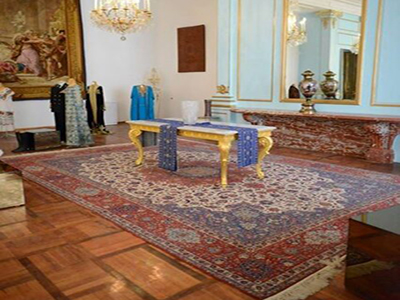
Lachak-Toranj rug by Master Mohammad Seirafian, which is kept in Niavaran Palace
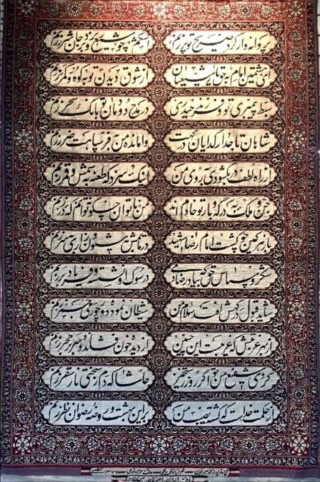
Rug donated to Astan Quds Razavi Museum in Mashhad
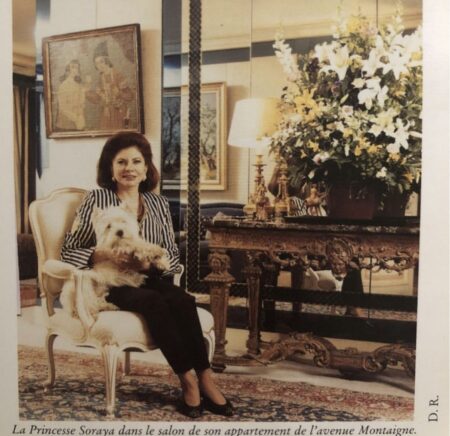
Queen Soraya with Seirafian rugs
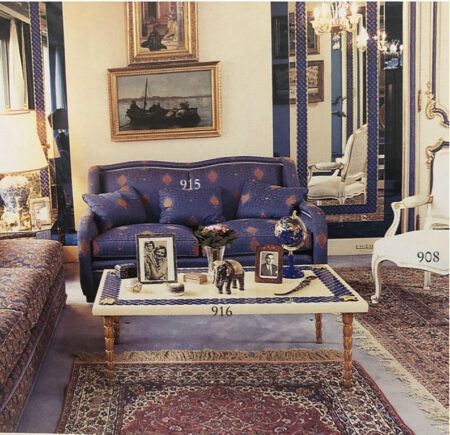
Queen Soraya’s home decorated with Seirafian rugs
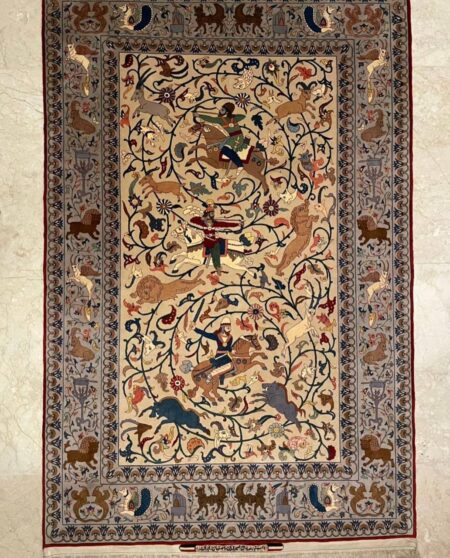
The hunting ground design rug by master “Sadegh Seirafian”, the design of this work was done by late Master “Mosavver-Ol-Molki”, inspired by the ancient Achaemenid and Parthian symbols.
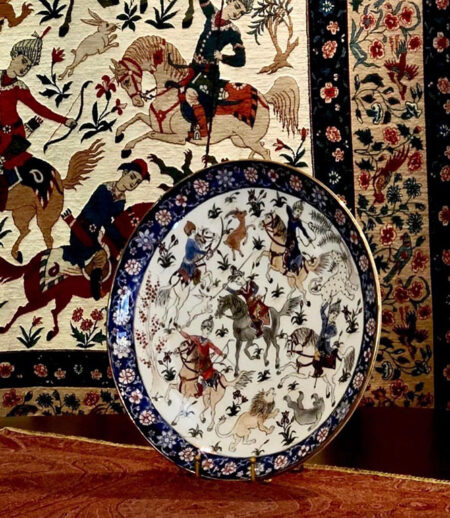
The designs of Seirafian carpet’s hunting ground are taken from the motifs of gold plates of the Sassanid period, which show the Persian king hunting.
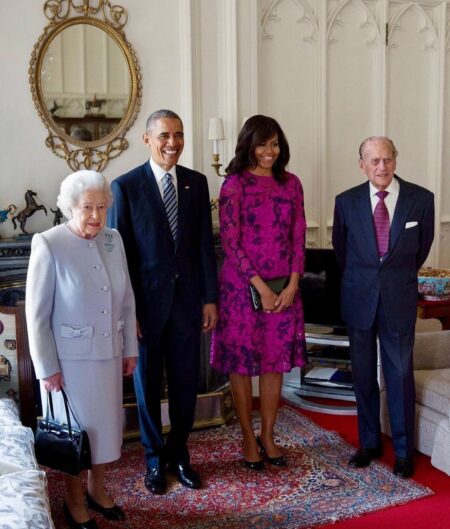
The famous queen carpet, which was produced for the first time by “Haj Reza Seirafian”
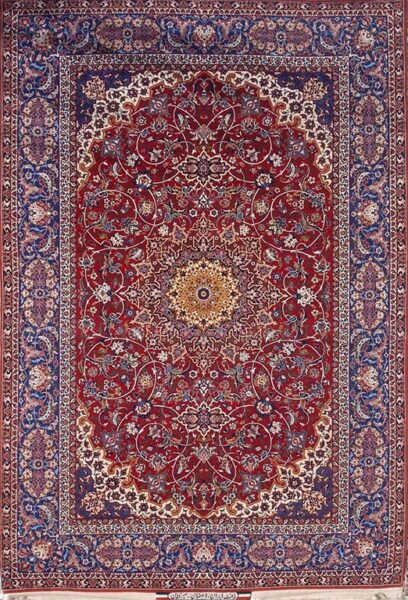
A full view of the Queen’s famous carpet at Windsor Castle by Master “Mohammad Seirafian”
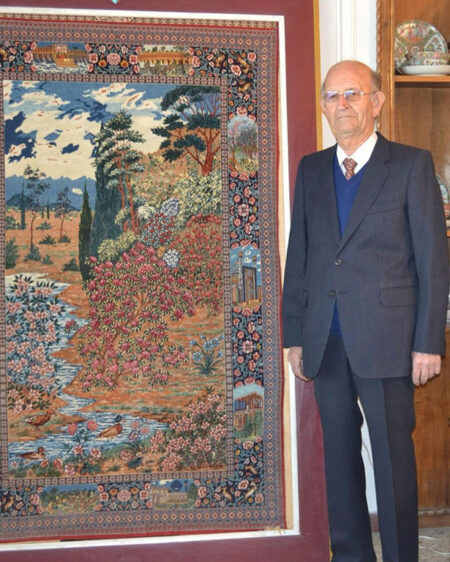
Master Ahmad Seirafian
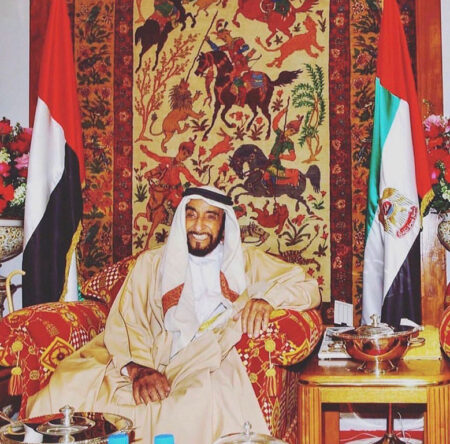
Mohammad Seirafian’s carpet is the beauty of the wall of Sheikh Zayed bin Sultan’s palace
In this article, we tried to introduce you to the Seirafian brand and its carpets. The Seirafian family is one of the most important families in Iran, who have worked hard to keep Iranian rugs and art alive for nearly a century.
Seirafian carpet designs are an inspiration to many manufacturers around the world. It is interesting to know that many audiences and enthusiasts know the names of these designs by their Iranian names such as Shikargah and Golu-Bulbul! This family has always kept the original motifs of the Safavid era alive and implemented them in their carpets.
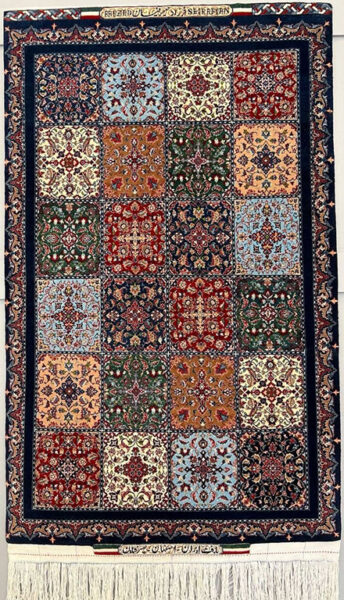
Farzad Seirafian
Anyone who has a carpet collection would like to have a Seirafian carpet. The value of Seirafian carpets is very high. The prices of Seirafian carpets in the Iranian and world markets vary. The age of the carpet, the name of the master weaver, and its size are among the factors that affect the price of a Seirafian carpet.
If you are planning to buy a Seirafian carpet, you can see some of them in the Vernacarpet online collection. All of these carpets are sold with a certificate of authenticity.